CBC
Wed, October 11, 2023
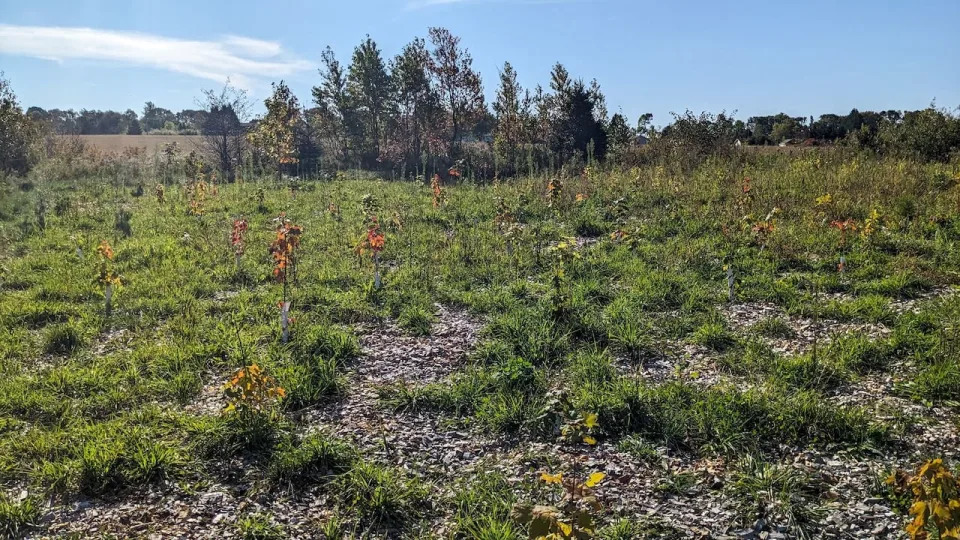
The Wright's Creek mini forest has 200 native trees and shrubs, including 15 different species. (Shane Hennessey/CBC - image credit)
The City of Charlottetown is experimenting with a new way of growing forests, using native species and denser planting to encourage faster growth.
It's called the Miyawaki method, named for the Japanese ecologist and botanist who developed the idea of mini forests, and how to grow them, in the 1970s.
The technique is now being used in urban areas across Canada and around the world.
"When we think about a forest, we're thinking about trees over four metres high, so hopefully within the decade we'll be at that point for a majority of this area," said Simon Wilmot, program co-ordinator for environment and sustainability team for Charlottetown.
"We're talking about creating forests in an urban or suburban area that can grow faster."
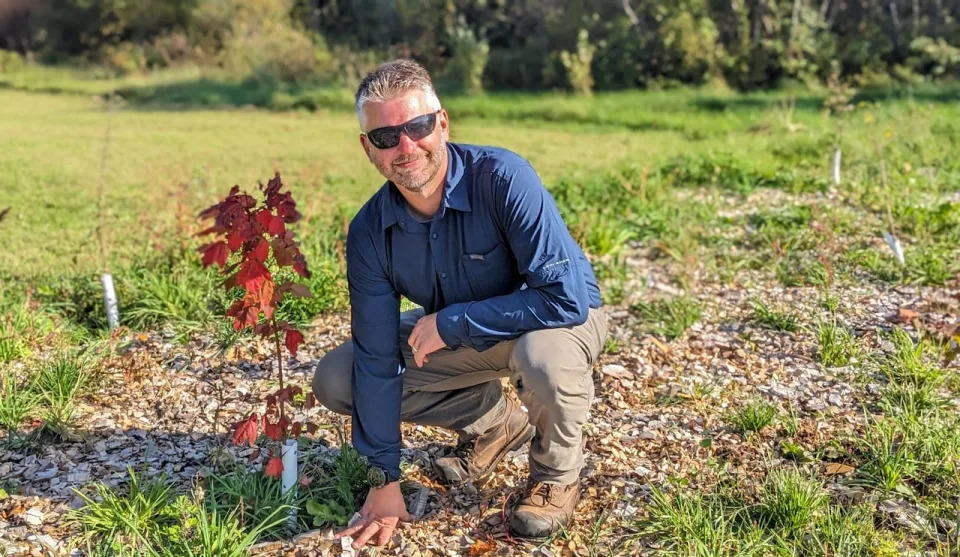
Simon Wilmot, program co-ordinator for the environment and sustainability for Charlottetown, says the goal is to grow forests within decades rather than centuries. (Shane Hennessey/CBC)
Wilmot said the first step is to amend the soil, to simulate the kind of organic matter that would be found in a mature forest. That involves adding a lot of compost and mulch.
"In this case, we added 12 cubic yards of wood chips to the site, and really tried to make sure the site was as healthy as possible in terms of the soil before we started planting," he said.
High-density planting
It's not just a matter of richer soil. The trees in the mini forest are also planted closer together, a metre apart versus the three metres you'd observe in a more traditional planting, said Wilmot.
"That high density does a number of different things. Number one, there's the competition. The competition between the trees will force them to grow faster, quicker," he said.
"Secondly, they will squeeze out space for invasive species. Most of the urban watersheds, we have problems with invasive species, so it really doesn't allow them any room."
The competition between the trees will force them to grow faster, quicker.
— Simon Wilmot, City of Charlottetown
Wilmot said the method "allows nature to take its course with the trees," with the strongest thriving.
"Those trees that don't make it, or die, will just feed the soil and provide organic material for the next generation."
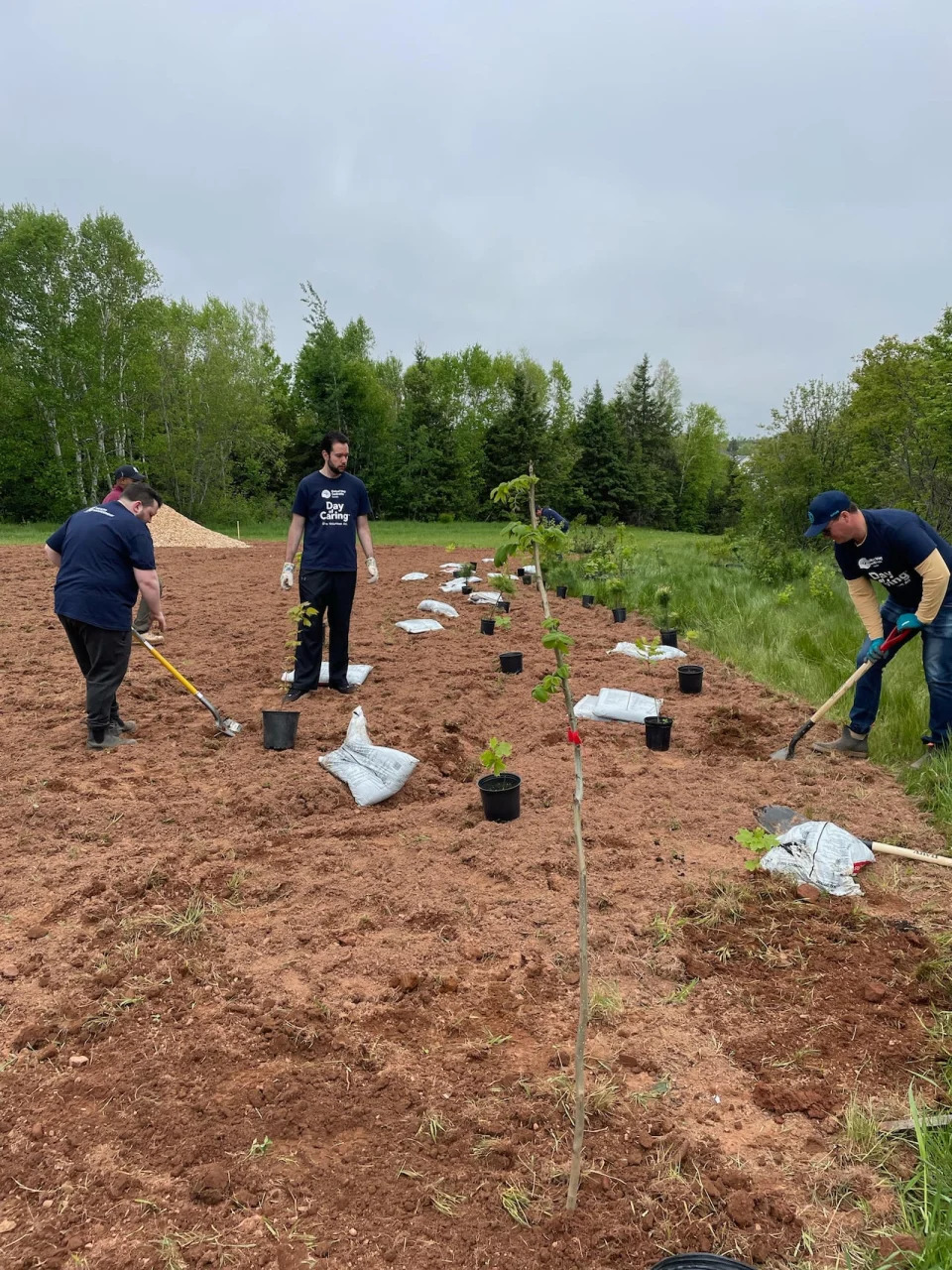
Wilmot says the first step was to amend the soil, to simulate the organic matter that would be found in a mature forest, by adding a lot of compost and mulch. (Submitted by Emma Doucette)
Wilmot said his crew planted two mini forests in June, a larger one in Wright's Creek with 200 native trees and shrubs and a smaller one in the Ellen's Creek watershed.
"The downside to this method is, it is costly. It does cost a lot to take the time to amend the soil," he said.
"So you are working on a smaller area that does cost more in the initial stages, but hopefully the long-term benefits outweigh any short-term inefficiencies from the cost."
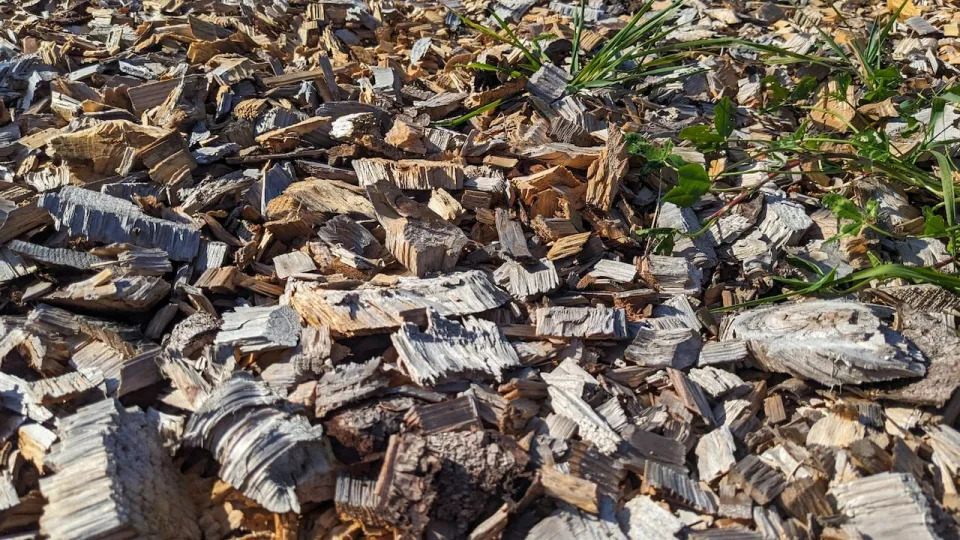
Crews added 12 cubic yards of wood chips to the site, to make sure that the site was as healthy as possible in terms of the soil before they started planting. (Shane Hennessey/CBC)
Wilmot said the mini forest method wouldn't work in downtown Charlottetown's Victoria Park, which post-tropical storm Fiona left needing reforestation, but is more suited for areas that are currently grass.
He said he hopes to add more micro forests soon.
"My aspirations always exceed my budget, so I always hope to be planting these things," Wilmot said.
"When we look to Europe, where this has been a common practice for a while, thousands have been planted. So hopefully across P.E.I. and our urban and suburban areas, this is the methodology that can really get going. Certainly it's been picked up in Ontario and Quebec a lot recently."
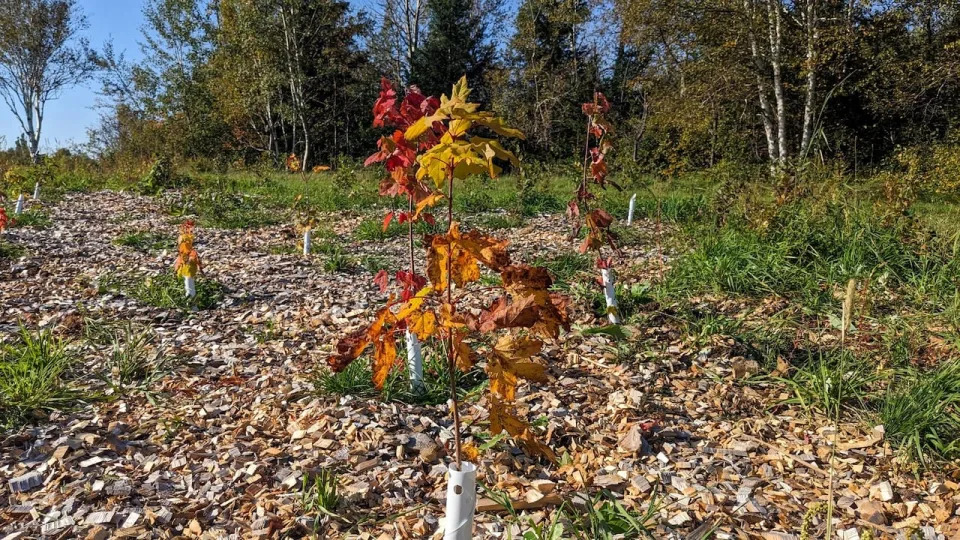
Simon Wilmot says the goal is to have a forest, with trees more than four metres tall, in a decade. (Shane Hennessey/CBC)
Some skepticism
The watershed co-ordinator for the Ellen's Creek Watershed Group said she was initially leery of the new planting technique.
"It just sounded too good to be true, in a way. You know, 'We're going to pack a bunch of trees in one area and they're going to hopefully turn into a more mature forest faster,'" said Emma Doucette.
"That's the part that made me skeptical. But working on the site, I realized this is a great approach and I learned a lot as well."
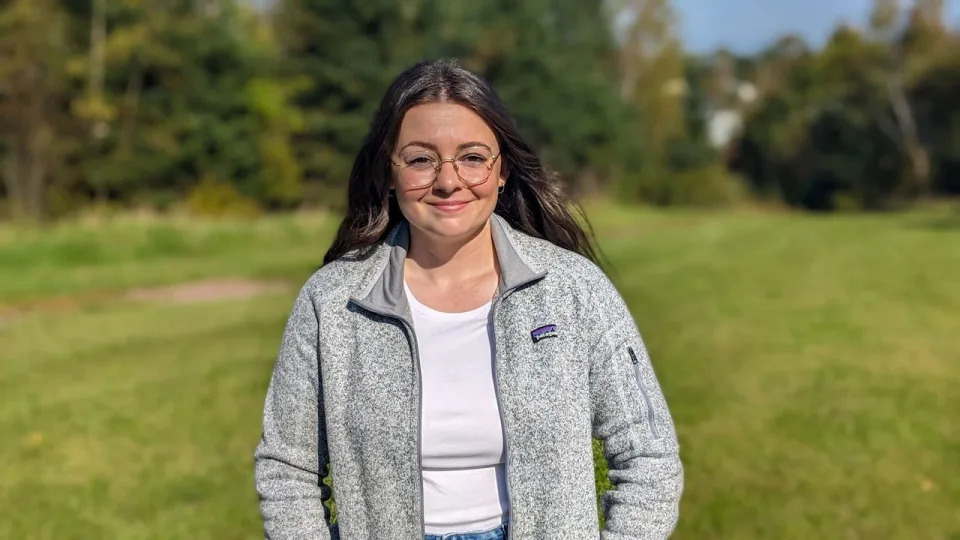
Emma Doucette, watershed co-ordinator for Ellen's Creek Watershed Group, was initially skeptical about the planting method. (Shane Hennessey/CBC)
Doucette said the added expense in preparing the soil could be a challenge for associations like hers.
"Watershed groups work with quite a limited budget sometimes. So I think it all just comes down to planning, and doing what we can according to what our resources are," she said.
"The upfront work was a lot, but I think if we're going to come out here and plant all these trees, we have to do it right."
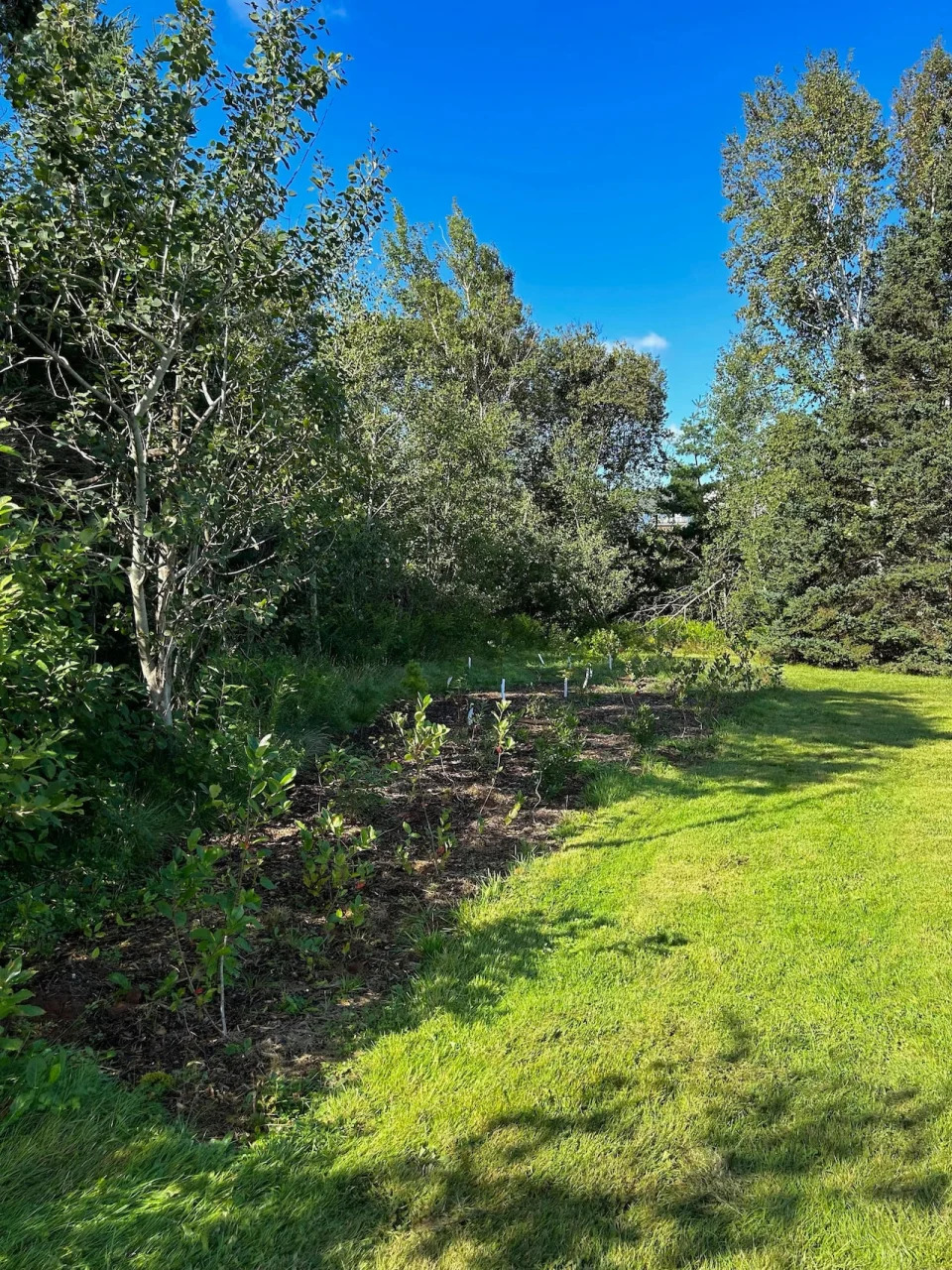
The Ellen's Creek mini forest is smaller but uses the same planting methods as the larger one. (Submitted by Emma Doucette)
Doucette too would like to see more mini forests being planted.
"Any spaces that maybe are being underutilized in the city, I'd love to see this technique used there," she said.
"My advice would be absolutely go for it, and if you're skeptical, maybe start small and see where it takes you."
No comments:
Post a Comment